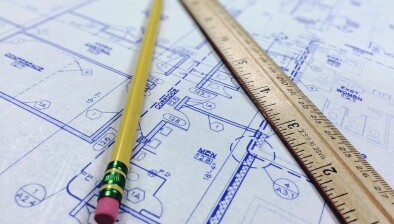Blog: Will Dundee’s new local development plan create opportunities?

While Dundee’s proposed new Local Development Plan (LDP) provides continuity, Ian Livingstone says more flexibility is required to attract investment and meet current demands.
Dundee’s latest Proposed Local Development Plan (LDP) was published at the end of August, with a statutory period of public consultation concluding today.
The draft plan sets out Dundee City Council’s spatial strategy and policies for development across the local authority area until 2029. It identifies land for a wide range of uses and provides specific requirements relative to housing and employment land.
In broad terms, the vision and objectives of the proposed LDP continue in a similar vein to the existing LDP for the city. There is a focus on Dundee as the economic driver for the Tayside region and development is prioritised at three locations. These are: Linlathen where 40 hectares of employment land is allocated; the Central Waterfront which is identified for mixed use development including commercial, housing and port related uses; and the Western Gateway where 750 houses and 50 ha of employment land is allocated.
According to the proposed LDP, the council aims to construct 480 houses a year in Dundee until 2029. However, little additional greenfield land has been included for residential purposes. In fact, just one new site at Ballumbie, allocating 150 units, has been added. The greenfield land allocation at Dykes of Grey in the existing LDP has been carried forward, but the majority (66%) of housing is skewed towards brownfield land.
Brownfield sites by their very nature are more challenging and costly to redevelop due to the presence of existing buildings and contamination issues arising from previous uses. As such their appeal to housebuilders and developers is restricted. The effectiveness of these sites in contributing to the housing supply target is therefore limited. The solution would be to allocate more greenfield land, but this is largely prevented due to the sites being located out with the Dundee settlement boundary. Other solutions must therefore be investigate in order for the city to fulfil its housing requirements.

In contrast to housing land supply, the availability of employment land stock in Dundee is extensive. The most recent Business Land Audit, published alongside the proposed LDP, identified 160 ha of available land. To put this into context, 24.53 ha of land was taken up during 2013-17. Four years prior to that take-up averaged at 0.91 ha per annum. The supply of employment land relative to demand is therefore extremely healthy. This provides the opportunity for more flexible development to be introduced in areas of the city that were traditionally restricted to business and industrial use, without prejudicing the stock of available employment land.
The council proposes to regenerate the industrial area of Blackness, highlighting the potential to reuse redundant land and buildings for a wider variety of commercial and complementary uses. This is an encouraging start, especially for an area in Dundee that exudes potential, has good connectivity and boasts close links with the universities.
Further potential for mixed use development exists at other central areas that are partially occupied and have the attributes to integrate effectively with the surrounding built and natural environment, such as at Annfield Road and exemplified by the regeneration around Morgan Street. Such development will help to reinvigorate communities and assist with meeting changing business requirements e.g. low cost accommodation for start-up businesses.
At a time when significant and concerted efforts are focused upon the success of the Waterfront, the proposed LDP considers opportunities for other areas of the city to contribute to enhancing the vibrancy of Dundee. Progressive thought and vision is necessary however to effectively capture and maximise the levels of investor interest expected to arise as a ‘ripple effect’ from the V&A and associated development at the Waterfront.
Overall the proposed LDP provides continuity to the existing LDP. However, given Dundee’s present aspirations, a more proactive approach to the appropriate redevelopment of brownfield land for mix use purposes should be included, as well as a more generous allocation of effective land for housing which is proven as deliverable in the short term. This will provide Dundee with the flexibility required to attract investment and meet the changing demands of the current market.

















